In the bustling night markets of China, where sizzling woks meet the aroma of spices, one dish stands out as a symbol of communal joy and culinary artistry: stir-fried river snails, or baochao luosi. This humble street food, beloved by locals and adventurous travelers alike, combines the earthy richness of freshwater snails with a symphony of fiery, aromatic flavors. More than just a meal, it is a cultural icon, a testament to China’s ability to transform simple ingredients into gastronomic poetry. Let us delve into the history, craft, and cultural significance of this beloved dish.
A Historical Tapestry: From Peasant Fare to National Treasure
The story of stir-fried river snails begins in China’s ancient waterways, where communities have harvested freshwater snails for millennia. Historically, snails were a peasant food—a cheap, abundant protein source for those living near rivers and lakes. Yet, over centuries, chefs and home cooks elevated this humble ingredient into a dish that now graces menus from humble street stalls to Michelin-starred restaurants.
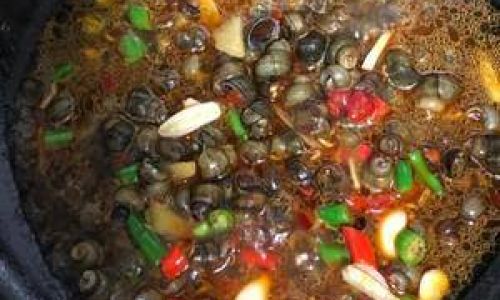
The dish’s rise to fame is closely tied to China’s night market culture. As urban centers grew, street vendors perfected the art of quick, high-heat cooking, turning snails into a addictive snack. Today, in cities like Wuhan, Guangzhou, and Chengdu, the sound of vendors shouting “Luosi! Xianxian de luosi!” (“Snails! Fresh snails!”) echoes through crowded alleys, drawing crowds hungry for a taste of tradition.
The Anatomy of Flavor: Ingredients That Define the Dish
At its core, stir-fried river snails is a masterclass in balancing bold flavors. The dish typically features:
- Fresh River Snails: Small, black-shelled snails (Bellamya aeruginosa) are preferred for their tender meat and mild sweetness. They must be purged of grit and mud before cooking, a process involving soaking in salted water or oil to encourage them to expel impurities.
- Aromatics: Garlic, ginger, and fresh chili form the flavor base. Sichuan peppercorns or dried red chilies add a numbing, fiery kick, while fermented black bean paste (doubanjiang) contributes umami depth.
- Sauces and Seasonings: A blend of soy sauce, rice wine, sugar, and oyster sauce creates a glossy, savory-sweet glaze. Fresh cilantro and basil leaves, tossed in at the end, add a burst of herbal freshness.
The magic lies in the harmony of contrasts: the heat of chili, the pungency of garlic, and the sweet-salty glaze meld into a complex tapestry that lingers on the palate.
The Cooking Process: Wok Hei and Precision
Mastering stir-fried river snails requires understanding wok hei—the breath of the wok—a term describing the smoky, charred flavor imparted by high-heat cooking. The process is swift and intense:
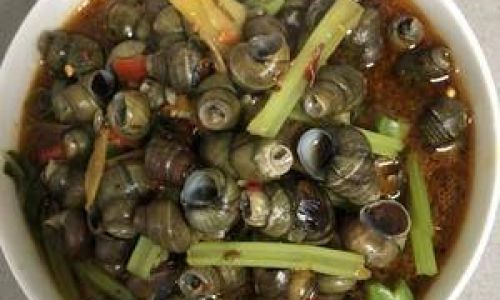
- Preparation: Snails are blanched briefly to loosen their meat from the shells. Vendors often snap off the shell tips to make sucking the meat easier, a technique called “dao luo”.
- Stir-Frying: The wok is heated until smoking. Oil, garlic, ginger, and chili are added, sizzling violently. The snails follow, tossed vigorously to coat them in the aromatic oil. A splash of rice wine deglazes the pan, releasing sticky bits of flavor.
- Sauce and Finish: A mixture of soy sauce, sugar, and fermented bean paste is poured in, reducing to a sticky glaze. The dish is finished with a handful of cilantro and basil, their fragrance wilted by the residual heat.
The result? Tender snail meat clinging to their shells, glossy with sauce, and redolent of smoke and spice.
Cultural Significance: More Than Just a Snack
Stir-fried river snails are inextricably linked to China’s social fabric. They are eaten communally, shared from a communal plate, with diners using toothpicks or chopsticks to extract the meat. The ritual of sucking snails from their shells fosters laughter and camaraderie, turning strangers into friends over a plate of spicy, garlicky delight.
The dish also holds symbolic weight. In some regions, snails represent resilience—creatures that thrive in muddy waters, much like the working class who first cherished them. During festivals like the Mid-Autumn Festival, snails are eaten to symbolize family reunions and the harvest’s bounty.
Regional Variations: A Taste of Geography
China’s vastness has given rise to countless regional interpretations of stir-fried snails:
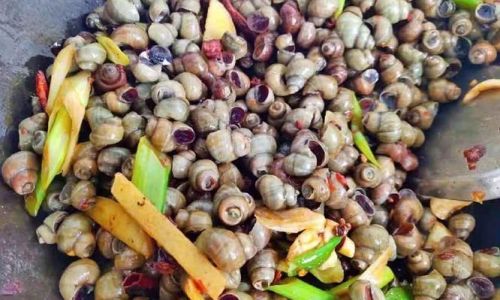
- Sichuan Style: Doubled down on mala (numbing-spicy) flavors with Sichuan peppercorns and dried chilies.
- Cantonese Style: Milder, with oyster sauce and black bean sauce, highlighting the snails’ natural sweetness.
- Hunan Style: Feisty with pickled chilies and vinegar, offering a tangy counterpoint to the meat’s richness.
Each variation reflects local palates and ingredients, proving that even a humble snail can be a canvas for culinary innovation.
Health and Nutrition: A Surprisingly Nutritious Treat
Beyond its flavor, stir-fried river snails offer nutritional benefits. Low in fat and high in protein, snails are also rich in iron, calcium, and vitamin B12. Traditional Chinese medicine praises them for their ability to clear heat and detoxify the body, making them a popular summer snack.
However, moderation is key. Snails can harbor parasites if not cooked properly, underscoring the importance of thorough purging and high-heat cooking.
The Global Appeal: From Street Food to Fine Dining
In recent years, stir-fried river snails have transcended borders, appearing on menus in New York, London, and Paris. Chefs experiment with fusion twists—adding butter, herbs de Provence, or even cheese—though purists argue that such adaptations dilute the dish’s soul.
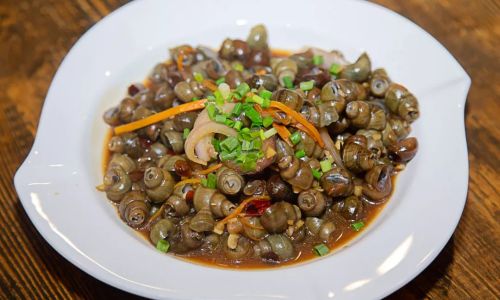
Yet, the essence remains: a celebration of fire, spice, and community. Whether eaten from a plastic bowl in a night market or a ceramic plate in a trendy bistro, the dish connects diners to China’s culinary heritage.
A Personal Ode: Memories of Sizzle and Spice
For many, the first encounter with stir-fried river snails is unforgettable. I recall my first taste in Wuhan’s bustling Shuiguo Lake night market. The air thick with chili smoke, a vendor handed me a plastic bag filled with snails, their shells glistening with sauce. Skeptical at first, I popped one into my mouth—and was hooked. The meat, tender and briny, exploded with garlic and chili, followed by a lingering heat that made my lips tingle. Around me, strangers laughed, their faces flushed, sharing stories over steaming plates. In that moment, the dish became more than food—it was a portal to Chinese hospitality.
Conclusion: The Enduring Allure of Stir-Fried River Snails
Stir-fried river snails are a microcosm of China’s culinary philosophy: respect for tradition, embrace of innovation, and joy in sharing. They remind us that great food need not be complicated—only cooked with passion, precision, and a willingness to savor life’s simplest pleasures.
So the next time you hear the clatter of a wok in a night market, pause. Let the sizzle of garlic and chili guide you. Order a plate of stir-fried snails, suck the meat from its shell, and join the millennia-old tradition of finding beauty in the humblest of ingredients. After all, in China, even a snail can become a star.
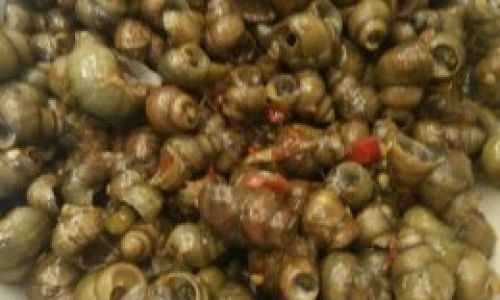

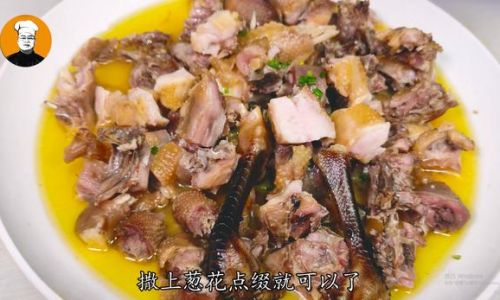

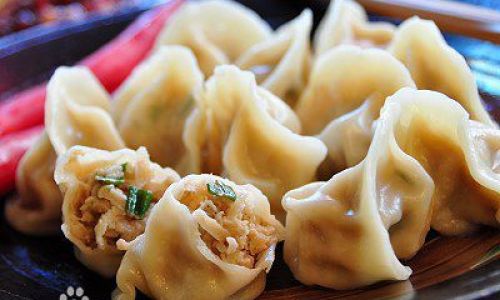


0 comments